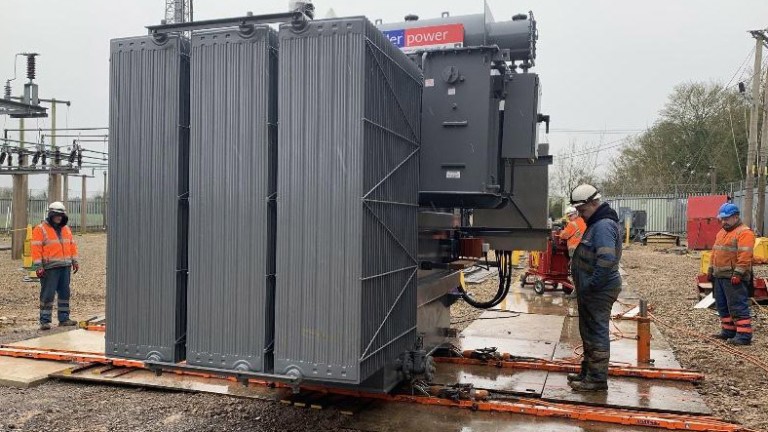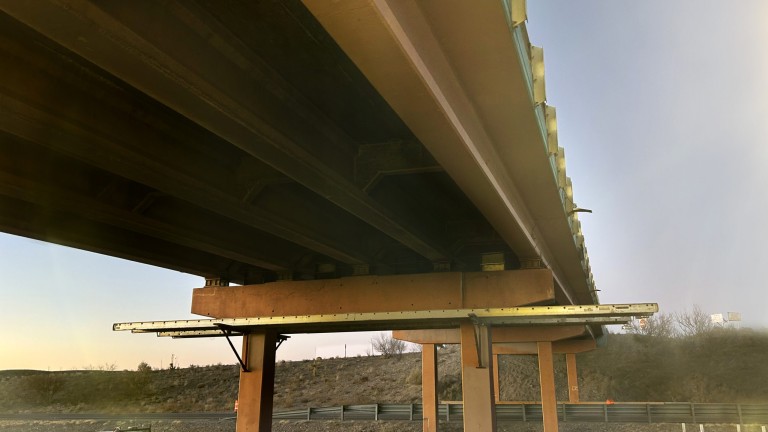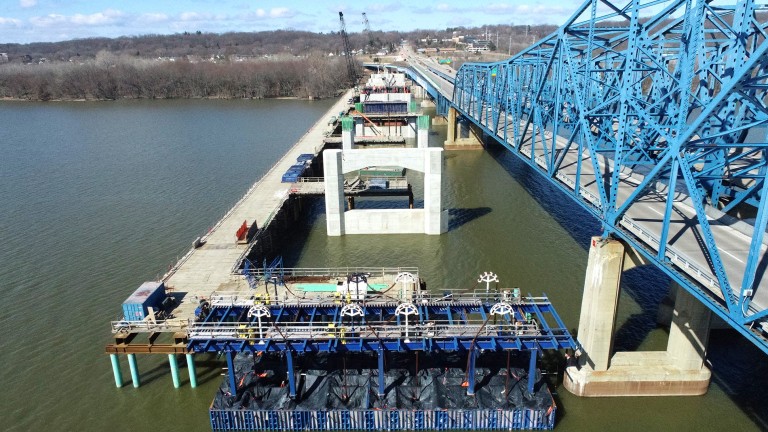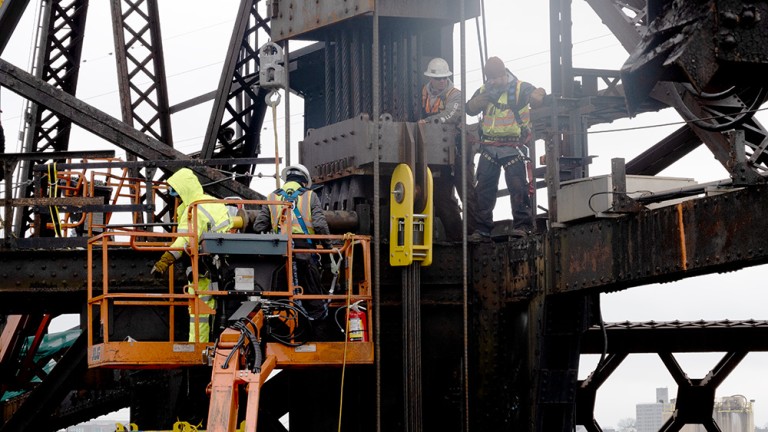The industrial plant had a monumental problem. A corroded platform was located 150 feet in the air, unstable and supporting a nearly 180-foot tall vent stack with a 7-foot diameter. The platform was nearly impossible to reach, because it was located above equipment that couldn’t be moved or disturbed.
To make the situation more challenging, the engineering drawings for the platform, vent stack and building were more than 40 years old and inaccurate. Field surveys were difficult because it was unsafe for engineers to stand on the degraded platform to take measurements. To top it off, timely project completion was critical as hurricane season was approaching. The plant manager feared a storm could collapse the platform, taking the vent stack with it.
Sky High Material Transport System Solves Staging Challenge
Engineered Rigging’s engineers were undaunted by the numerous hurdles. They immediately dissected each aspect of the situation, applied their ingenuity and developed a multi-step, innovative plan. First, they needed to identify a staging area for the equipment and materials. Because there wasn’t space on the ground, the rooftop of the adjacent building was the only option. Quite literally rising to the occasion, the company’s engineers designed a highly maneuverable transport system by fabricating a customized cart to ride on the existing crane rails that ran circumferentially around the building’s roof. Once the cart was in place, Engineered Rigging mounted a knuckle boom crane to the self-propelled cart. Materials were lifted by crane to the roof, staged and transported as needed.
“This solution allowed us complete access to every angle around the structure. We could move materials from one place on the building to another with relative ease. We didn’t need a giant crane, which would have been extremely expensive and inefficient,” said Christopher Cox, P.E., President and Co-founder.
Custom Aerial Work Platform Ensures Safety
Now the company had a place to stage materials, but where would the skilled craft stand to remove and replace the platform around the vent stack? The firm’s engineers designed a 20 foot x 36 foot x 8 foot work platform capable of safely supporting 7,500 pounds of equipment and up to 10 craft personnel. Engineered Rigging’s fabrication facility constructed the 20,000-pound structure in nine large pieces and numerous smaller pieces that fit together like a puzzle. A cantilevered design secured the platform to the building using wire rope cables and rigging hardware, all at the face of the building. Two additional cables secured the vent stack to the building. The new structure had the dual function of supporting the vent stack in hurricane wind conditions and serving as a safe, secure work platform in operating conditions.
A testament to Engineered Rigging’s commitment to safety and engineering prowess, the platform supported 10,000 pounds of live load, plus 20,000 pounds of self-weight, all without any support at the end. It was also strong enough to resist more than 30,000 pounds in the horizontal direction.
Quality Assurance Abounds
After installing the new work structure, Engineered Rigging’s team dismantled the old platform. As the crew members removed each piece, they compared the measurements with the original drawings. Often, the measurements didn’t match. To address these discrepancies, Engineered Rigging had purposely left one end of each replacement member unfinished and longer than required, so that the crew could cut them to the required length onsite. When the difference exceeded the tolerance, Engineered Rigging’s custom-cut a new piece in its facility and quickly shipped it to the plant. By having its own cutting-edge fabrication capabilities, Engineered Rigging was able to avoid down-time waiting for a vendor to provide replacement materials and ensure that the platform was built exactly to specification.
Safety was paramount from concept to completion. “From the design components to each step in the implementation process, safety was our priority. We were working, cutting and welding in winds up to 25 miles per hour, and falling material would have been catastrophic. We took precautions and conducted a pre-job safety brief for each onsite activity. The project was well managed, resulting in zero injuries and time savings,” Cox reported.
Without any disruptions to plant operations, Engineered Rigging adeptly completed the $1.9 million project in just 19 weeks (10 onsite), two weeks ahead of schedule, which saved the plant more than $500,000.
Services Provided by Engineered Rigging
We designed and fabricated and assembled the aerial work platform and a customized cart to ride on the existing crane rails. Our crew assembled the aerial work platform, removed the degraded platform and built the new platform.
Engineered Rigging provided an SMPT and knuckle boom crane and our skilled craftsmen operated the equipment.












